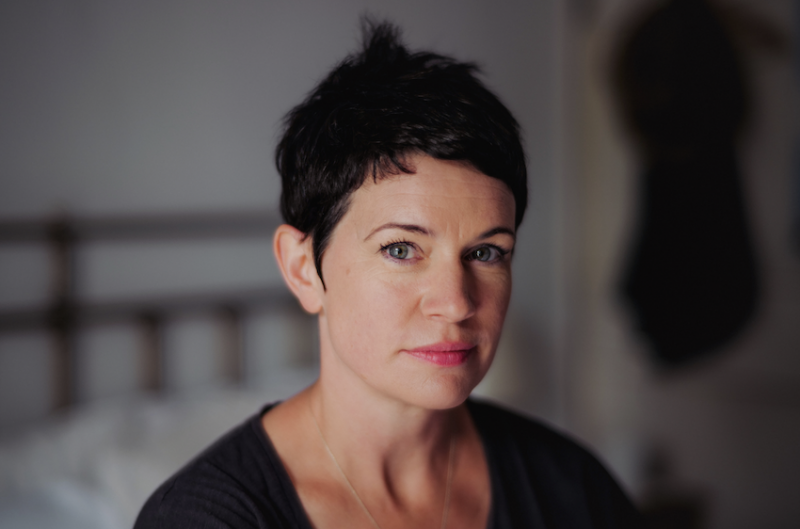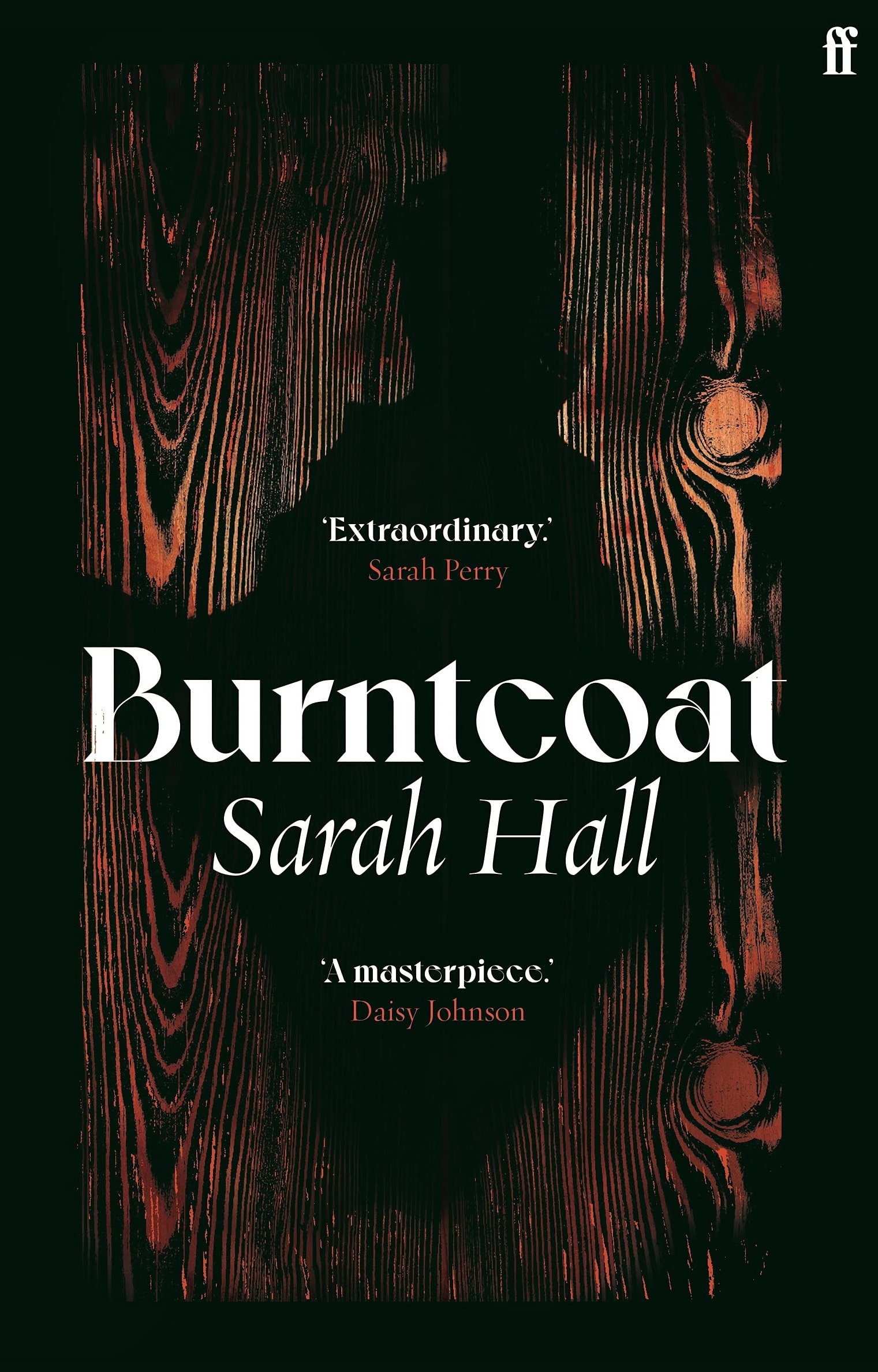Sarah Hall: Burntcoat review - love after the end of the world | reviews, news & interviews
Sarah Hall: Burntcoat review - love after the end of the world
Sarah Hall: Burntcoat review - love after the end of the world
Beautiful lives of loss, in a pandemic close to our own

Sarah Hall’s Burntcoat is one of those new books with the unsettling quality of describing or approximating a great moment in history and its aftermath, as the reader is still living through it.
The pandemic of Burntcoat is not our Corona or Covid, but Nova, a disease that more closely resembles the bubonic plague, with its pustules and arguably more horrific end. We join Burntcoat’s narrator, the artist, Edith, when the disease, in remission for a number of years, begins to overtake and destroy her body. Their pandemic seems arguably worse than ours, as violence erupts on the news and breaks into Edith’s life.
 Burntcoat is the home of the novel’s narrator, a massive warehouse studio in the unspecified north, on the edge of a canal. It becomes Edith’s refuge during the outbreak, closeted away with her lover, Halit, their passion a foil to the crumbling outside world. Through them, Hall provides an achingly accurate description of an emotional and physical connection that feels as though it describes a whole life. Halit’s status as a refugee interacts subtly with the reality of a sickness that is no respecter of borders. His geographical and cultural otherness is contrasted with that of Edith, an individual who makes no real attempt to fit around others. They exist seemingly totally in their own world, but here, too, there are no borders, and the disease creeps in.
Burntcoat is the home of the novel’s narrator, a massive warehouse studio in the unspecified north, on the edge of a canal. It becomes Edith’s refuge during the outbreak, closeted away with her lover, Halit, their passion a foil to the crumbling outside world. Through them, Hall provides an achingly accurate description of an emotional and physical connection that feels as though it describes a whole life. Halit’s status as a refugee interacts subtly with the reality of a sickness that is no respecter of borders. His geographical and cultural otherness is contrasted with that of Edith, an individual who makes no real attempt to fit around others. They exist seemingly totally in their own world, but here, too, there are no borders, and the disease creeps in.
Their story is interwoven with Edith’s youth, living with a mother whose erratic behaviour was influenced by a massive brain aneurysm, on the moors without mains electricity. This house is the site of Edith’s first artwork, a practice that grows into the creation of huge wooden sculptures, their material hardened by controlled fire. Edith’s most famous work is "Hecky", seemingly modelled on Gormley’s "Angel of the North", a monumental sculpture of a woman. It is she who is chosen to memorialise the million Nova victims of Britain, her name added to theirs on its steps. The book is littered with symbolism, and we understand that this sculpture, and the love that exists between Halit and Edith, is the ultimate expression of loss, and of a terrible event that both brings people together and tears them apart.
Burntcoat is a survey of a life at its very end, an odd autobiography of an artist whose life is marked by grief and the desire to create. Her artistic method is perhaps a bit of an overegged representation of this, a process which brings new life from destruction. It is immensely readable and beautifully told, so much so that, if you’re anything like me, you’ll read it deliberately slowly so as to prolong its life as much as possible. Like Edith and Halit’s love, it is a story that feels viciously curtailed, cut off short before it even has the chance to begin. We may not be living through the worst case scenario, but it is certainly a novel that feels terribly close to the bone.
- Burntcoat by Sarah Hall (Faber & Faber, £12.99)
- More book reviews on theartsdesk
rating
Explore topics
Share this article
The future of Arts Journalism
You can stop theartsdesk.com closing!
We urgently need financing to survive. Our fundraising drive has thus far raised £49,000 but we need to reach £100,000 or we will be forced to close. Please contribute here: https://gofund.me/c3f6033d
And if you can forward this information to anyone who might assist, we’d be grateful.

Subscribe to theartsdesk.com
Thank you for continuing to read our work on theartsdesk.com. For unlimited access to every article in its entirety, including our archive of more than 15,000 pieces, we're asking for £5 per month or £40 per year. We feel it's a very good deal, and hope you do too.
To take a subscription now simply click here.
And if you're looking for that extra gift for a friend or family member, why not treat them to a theartsdesk.com gift subscription?
more Books
 'We are bowled over!' Thank you for your messages of love and support
Much-appreciated words of commendation from readers and the cultural community
'We are bowled over!' Thank you for your messages of love and support
Much-appreciated words of commendation from readers and the cultural community
 Robin Holloway: Music's Odyssey review - lessons in composition
Broad and idiosyncratic survey of classical music is insightful but slightly indigestible
Robin Holloway: Music's Odyssey review - lessons in composition
Broad and idiosyncratic survey of classical music is insightful but slightly indigestible
 Thomas Pynchon - Shadow Ticket review - pulp diction
Thomas Pynchon's latest (and possibly last) book is fun - for a while
Thomas Pynchon - Shadow Ticket review - pulp diction
Thomas Pynchon's latest (and possibly last) book is fun - for a while
 Justin Lewis: Into the Groove review - fun and fact-filled trip through Eighties pop
Month by month journey through a decade gives insights into ordinary people’s lives
Justin Lewis: Into the Groove review - fun and fact-filled trip through Eighties pop
Month by month journey through a decade gives insights into ordinary people’s lives
 Joanna Pocock: Greyhound review - on the road again
A writer retraces her steps to furrow a deeper path through modern America
Joanna Pocock: Greyhound review - on the road again
A writer retraces her steps to furrow a deeper path through modern America
 Mark Hussey: Mrs Dalloway - Biography of a Novel review - echoes across crises
On the centenary of the work's publication an insightful book shows its prescience
Mark Hussey: Mrs Dalloway - Biography of a Novel review - echoes across crises
On the centenary of the work's publication an insightful book shows its prescience
 Frances Wilson: Electric Spark - The Enigma of Muriel Spark review - the matter of fact
Frances Wilson employs her full artistic power to keep pace with Spark’s fantastic and fugitive life
Frances Wilson: Electric Spark - The Enigma of Muriel Spark review - the matter of fact
Frances Wilson employs her full artistic power to keep pace with Spark’s fantastic and fugitive life
 Elizabeth Alker: Everything We Do is Music review - Prokofiev goes pop
A compelling journey into a surprising musical kinship
Elizabeth Alker: Everything We Do is Music review - Prokofiev goes pop
A compelling journey into a surprising musical kinship
 Natalia Ginzburg: The City and the House review - a dying art
Dick Davis renders this analogue love-letter in polyphonic English
Natalia Ginzburg: The City and the House review - a dying art
Dick Davis renders this analogue love-letter in polyphonic English
 Tom Raworth: Cancer review - truthfulness
A 'lost' book reconfirms Raworth’s legacy as one of the great lyric poets
Tom Raworth: Cancer review - truthfulness
A 'lost' book reconfirms Raworth’s legacy as one of the great lyric poets
 Ian Leslie: John and Paul - A Love Story in Songs review - help!
Ian Leslie loses himself in amateur psychology, and fatally misreads The Beatles
Ian Leslie: John and Paul - A Love Story in Songs review - help!
Ian Leslie loses himself in amateur psychology, and fatally misreads The Beatles
 Samuel Arbesman: The Magic of Code review - the spark ages
A wide-eyed take on our digital world can’t quite dispel the dangers
Samuel Arbesman: The Magic of Code review - the spark ages
A wide-eyed take on our digital world can’t quite dispel the dangers

Add comment